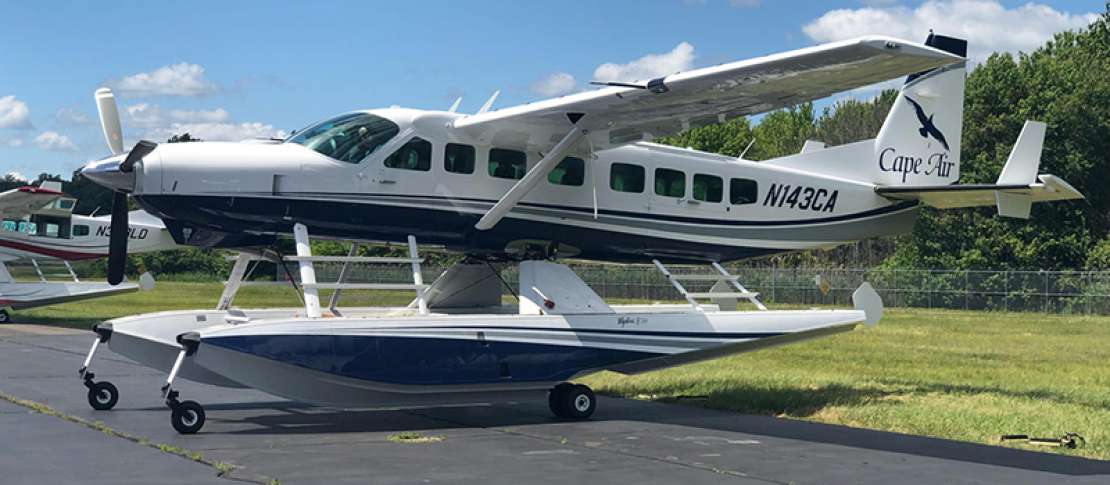Cape Air won approval to start flights from Boston Harbor to New York City, at East 23rd St. in Manhattan. This is a one year pilot program for four flights a day.
- Passengers will be picked up at Long Wharf (the original plan was for Boston Seaport)
- They’ll head over in the water towards Logan airport where they’ll take off for New York

Credit: Cape Air
The planes cannot fuel up at the close-in wharf, cannot dock there overnight, and have to yield to ferry traffic.
Nine-passenger aircraft will drop people off directly in Manhattan, avoiding the schlepp from LaGuardia. Flights are expected to run $320 – $340 each way. The airline has previously indicated a desired launch in spring.
Currently Amtrak is desirable for its downtown-to-downtown service, making up for slow train speeds by avoiding commutes for passengers looking to travel between city centers. This service offers to cut out the airport transit while retaining the speed of flying, though of course is subject to weather more than train travel. The major limitation, however, is frequency.


Should be a scenic spectacle on CAVU days, but will be interesting to see how their operational reliability works out. Lots of IMC days in both Boston Harbor and the East River, especially mornings and evenings.
Why not just commercial plus Blade? The one way fare would be roughly similar. You don’t seem to gain too much in Boston since you have to motor over to Logan anyway. Also, plodding along in a Caravan is hardly a nice experience (other than the fun low altitude views).
Not sure why nyc needs more air traffic around Manhattan. Already a mess with the helicopter nonsense. Train works just fine and better for environment.
Wouldn’t helicopter service be more efficient? Worked well for Kobe (until it didn’t)
@Willy, Long Wharf isn’t Logan. It’s by the aquarium, and maybe a 10-15 minute walk from most of downtown Boston. I do think it’ll be worth the experience, but only in nice VFR weather, once or twice. otherwise, Amtrak is still the way to go.
Water conditions are probably the most important factor affecting a seaplane’s ability to operate safely and comfortably. Landing and taking off on water can be a lot more difficult than on a runway. Waves or lack thereof, other traffic, currents, debris, etc. Pilots must be very experienced. Often it is a piece of cake. Other times not at all.
I performed a seaplane takeoff from an Alaska lake, but only with an experienced seaplane pilot sitting in the left seat. I don’t know anything about Boston Harbor or the East River, but suspect that many of the factors mentioned previously and others might interfere with scheduled departures and arrivals. Maybe others can shed light.